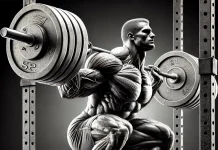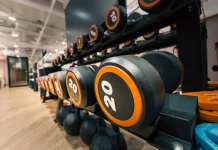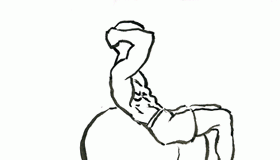Last Updated on September 30, 2022
If you’re looking to build strong, well-defined calves, the Calves Press on Leg Machine is a highly effective exercise that deserves a spot in your workout routine. This exercise not only targets the calf muscles but also offers a controlled movement pattern, allowing you to lift heavier weights safely while focusing on form and muscle engagement.
In this comprehensive guide, we’ll break down the Calves Press on Leg Machine, exploring its benefits, proper technique, variations, and tips to maximize your results. Whether you’re a beginner or an experienced lifter, this exercise can help you build powerful calves that support overall leg strength and stability.
The Importance of Strong Calves
The calf muscles play a crucial role in various everyday movements and athletic activities. Strong calves contribute to better balance, improved agility, and enhanced overall lower body strength. Whether you’re walking, running, jumping, or lifting, your calves are constantly engaged. Strengthening these muscles not only improves performance but also helps prevent injuries, particularly in the ankles and Achilles tendons.
Moreover, well-developed calves contribute to the aesthetics of a toned and symmetrical lower body, which is a key goal for many fitness enthusiasts.
What is the Calves Press on a Leg Press Machine?
The Calves Press on Leg Machine is a variation of the traditional leg press exercise that specifically targets the gastrocnemius and soleus muscles in the calves. By modifying foot placement on the leg press machine, you can isolate the calf muscles and perform a controlled press that focuses solely on calf engagement.
This exercise is a great option for those who want to work their calves with a machine-based exercise, as it provides support for the back and reduces the risk of strain that might occur when performing standing calf raises.
Muscles Worked
- Gastrocnemius: The larger, more visible calf muscle responsible for the shape and definition of the calf.
- Soleus: A deeper calf muscle located underneath the gastrocnemius that contributes to calf strength and endurance.
- Stabilizers: The muscles of the feet, ankles, and lower legs act as stabilizers during this exercise.
Benefits of Calves Press on the Leg Machine
- Isolated Calf Engagement: This exercise isolates the calf muscles, ensuring they are the primary focus. It allows for better muscle activation compared to standing calf raises, where other muscles may assist.
- Safe and Controlled Movement: The leg press machine provides stability and support, making this exercise safer for beginners or those with lower back issues.
- Adjustable Resistance: The leg press machine allows for adjustable weight, meaning you can progressively overload your calves over time for better muscle growth.
- Reduced Strain on the Spine: Since you’re seated, there’s less pressure on the spine and lower back, making it a good option for individuals with back issues or those looking for a less taxing exercise on the core.
How to Perform the Calves Press on the Leg Machine
Follow these steps to ensure proper form and technique while performing the Calves Press on Leg Machine:
Step 1: Set Up the Machine
- Adjust the seat: Make sure you’re seated comfortably on the leg press machine. Adjust the backrest so your hips and lower back are well-supported, and your legs are fully extended but not locked out at the knees.
- Choose the right weight: Start with a lighter weight than you would normally use for a traditional leg press. This allows you to focus on form and control before increasing the resistance.
Step 2: Position Your Feet
- Slide your feet down: Position your feet on the lower part of the leg press platform so that the balls of your feet are pressing against the plate, while your heels hang off the edge.
- Keep your feet close together: Your toes should be pointing straight ahead, and your feet should be approximately shoulder-width apart.
Step 3: Perform the Movement
- Press upward: Push the platform upward using the balls of your feet. As you extend your ankles, your toes will point away from your body, and your heels will lift higher.
- Pause at the top: At the peak of the movement, flex your calf muscles as hard as you can for a brief pause. This contraction is key to maximizing muscle engagement.
- Lower the platform slowly: Slowly bring your heels back down by flexing your ankles. Allow your toes to come back toward your body, controlling the descent for a full range of motion.
- Repeat: Perform the desired number of repetitions (typically 12-15 for hypertrophy or 8-10 for strength) before resetting the weight.
Tips for Maximizing Results
- Focus on Time Under Tension: Slow and controlled movements yield better results. Avoid rushing through the exercise; instead, focus on engaging the calf muscles throughout the entire movement.
- Start Light and Increase Gradually: While it might be tempting to load the machine with heavy weights, it’s best to start with a lighter load until you are comfortable with the movement. Gradually increase the weight over time to promote muscle growth.
- Keep Your Core Engaged: Although the movement primarily targets the calves, keeping your core engaged helps maintain good posture and stability during the exercise.
- Ensure Full Range of Motion: To fully engage the calf muscles, make sure you’re working through the full range of motion—bringing your heels as low as possible and pushing the balls of your feet up as high as you can.
- Breathe Properly: Exhale as you press the platform upward, and inhale as you lower it back down. Proper breathing helps maintain rhythm and focus during the exercise.
- Stretch After Each Set: Stretching your calves in between sets can help reduce tension and prevent muscle cramps.
Common Mistakes to Avoid
- Using Too Much Weight: Lifting excessive weight can compromise your form and reduce the effectiveness of the exercise. This can lead to injury or inadequate calf engagement.
- Bouncing the Weight: Avoid bouncing or jerking the weight up and down. This reduces muscle activation and can increase the risk of injury. Focus on a controlled and smooth movement.
- Inadequate Range of Motion: Not fully extending or flexing your calves limits the effectiveness of the exercise. Ensure you’re moving through the entire range of motion to maximize muscle activation.
- Locking Out Your Knees: Keep your knees slightly bent throughout the exercise to protect your joints and ensure the tension remains on your calves.
Variations of the Calves Press
To keep your workouts engaging and challenge your muscles in different ways, try incorporating these variations into your routine:
1. Single-Leg Calves Press
Perform the calf press one leg at a time to isolate each calf and address any muscle imbalances. This variation also improves stability and coordination.
2. Reverse Calves Press
In this variation, place your heels on the platform and press upward, targeting the anterior tibialis muscles located on the front of your lower legs. This can help improve ankle stability and balance.
3. Tempo Calves Press
Adjust the speed of your repetitions to focus on muscle endurance or explosive power. Try performing slow reps with a 3-second descent and a 1-second pause at the bottom or fast reps with minimal pause.
How to Incorporate Calves Press into Your Workout Routine
Depending on your fitness goals, you can incorporate the Calves Press on Leg Press Machine into your lower body or calf-specific workout routine. Here’s an example:
Lower Body Strength Routine:
- Squats: 4 sets of 8 reps
- Leg Press: 4 sets of 10 reps
- Calves Press on Leg Machine: 3 sets of 12-15 reps
- Lunges: 3 sets of 10 reps per leg
- Hamstring Curls: 3 sets of 12 reps
Calf-Focused Routine:
- Standing Calf Raises: 4 sets of 12-15 reps
- Seated Calf Raises: 4 sets of 12-15 reps
- Calves Press on Leg Machine: 4 sets of 15-20 reps
- Single-Leg Calf Raises: 3 sets of 10-12 reps per leg
Make sure to allow adequate recovery between sets and workouts to promote muscle growth and avoid overtraining.
Final Thoughts
The Calves Press on Leg Press Machine is an effective and safe way to build stronger calves. By incorporating this exercise into your routine and focusing on proper form and progression, you’ll be able to enhance calf muscle size, strength, and endurance. Whether you’re aiming to improve performance in sports, prevent injury, or enhance the aesthetics of your lower legs, the Calves Press on Leg Press Machine can help you achieve your goals.
Remember to start light, pay attention to your form, and make gradual progress over time for the best results. Add this exercise to your calf training repertoire and watch your lower leg strength soar!
This comprehensive guide offers everything you need to get the most out of your calves press routine while optimizing for muscle growth and endurance. Happy training!
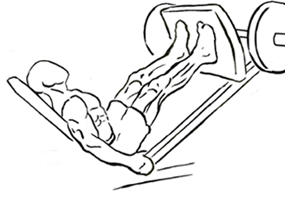
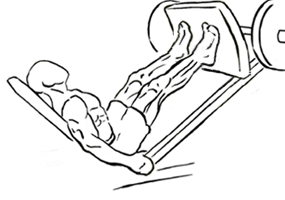
Exercise images by Everkinetic.



